About Kibera Slum
Kibera slum is located in Nairobi, Kenya. It is the largest and
the poorest African slum with a population of around one million covering about
some 250 hectares of land. The name “Kibera” is derived from kibra, a Nubian
word meaning “forest” or “jungle.”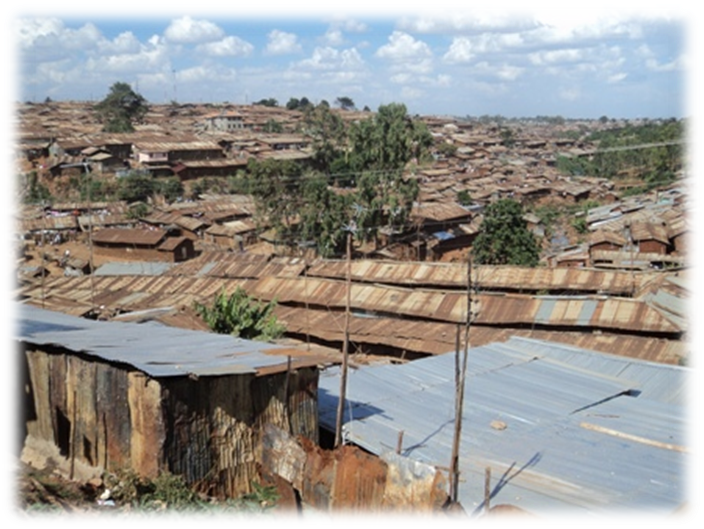
The slum originated in 1918 as a Nubian soldiers’ settlement in a forest outside Nairobi, with plots allotted to soldiers as a reward for service in the First World War and earlier wars. For some reason, though, the British never gave the Nubians the title deeds to their new land. The soldiers built homes, and set up businesses. But they were squatters - with no legal rights.
After Kenyan independence in 1963, however, various forms of housing were made illegal by the government, rendering Kibera unauthorized on the basis of land tenure. Essentially, since the early 1970s landlords have rented out their property to a significantly greater number of tenants than legality permits. Since the tenants, who are extremely poor, are unable to obtain or rent land that is “legal” according to the Kenyan government, the slum-dwellers find the rates offered to be comparatively affordable. The number of residents in Kibera has increased accordingly despite its unauthorized nature.
Land Ownership, Housing and population
The Government owns
all the land. 10% of people are shack 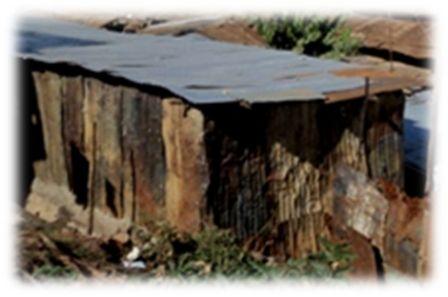 owners and many of these people own many
other shacks and sub-let them. All the rest are tenants with no rights. The
average size of shack in this area is 12ft x 12ft built with mud walls,
screened with concrete, a corrugated tin roof, dirt or concrete floor. The cost
is about Kshs 700 per Month (USD 9). These shacks often house up to 8 or more,
many sleeping on the floor.The original settlers of Kibera were the Nubian
people from the Kenyan/Sudanese border – they now occupy about 15% of Kibera,
are mostly Muslim and are also mostly shack owners. The other shack owners are
mostly Kikuyu (the majority tribe in Nairobi) – although in most cases they do
not live there but are absentee landlords. The majority of the tenants are Luo,
Luhya and some Kamba – these people are from the west of Kenya. There are many
tensions in Kibera, particularly tribal tensions between the Luo & Kikuyu,
but also between landlord and tenant and those with and without jobs.
owners and many of these people own many
other shacks and sub-let them. All the rest are tenants with no rights. The
average size of shack in this area is 12ft x 12ft built with mud walls,
screened with concrete, a corrugated tin roof, dirt or concrete floor. The cost
is about Kshs 700 per Month (USD 9). These shacks often house up to 8 or more,
many sleeping on the floor.The original settlers of Kibera were the Nubian
people from the Kenyan/Sudanese border – they now occupy about 15% of Kibera,
are mostly Muslim and are also mostly shack owners. The other shack owners are
mostly Kikuyu (the majority tribe in Nairobi) – although in most cases they do
not live there but are absentee landlords. The majority of the tenants are Luo,
Luhya and some Kamba – these people are from the west of Kenya. There are many
tensions in Kibera, particularly tribal tensions between the Luo & Kikuyu,
but also between landlord and tenant and those with and without jobs.
Water
Until
recently Kibera had no water and it had to be collected 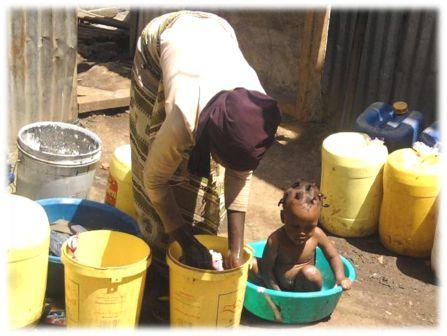 from the Nairobi dam.
The dam water is not clean and causes typhoid and cholera. Now there are two
mains water pipes into Kibera, one from the municipal council and one from the
World Bank. Residents collect water at Kshs 3 per 20 litres which many families
in Kibera can't afford as they will need more than 90 litres of water on a
daily basis.
from the Nairobi dam.
The dam water is not clean and causes typhoid and cholera. Now there are two
mains water pipes into Kibera, one from the municipal council and one from the
World Bank. Residents collect water at Kshs 3 per 20 litres which many families
in Kibera can't afford as they will need more than 90 litres of water on a
daily basis.
Sewage
In most of Kibera there are no toilet facilities. One latrine (hole
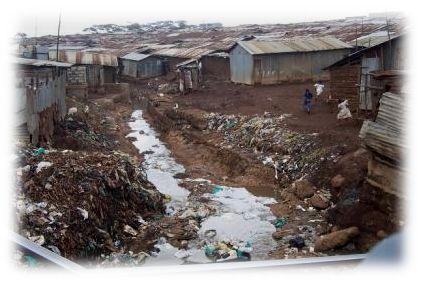
in the ground) is shared by up to 50 shacks. Once full, young boys are employed to empty – they take the contents to the river. UN-Habitat and a few other agencies are trying to help and improve this situation but it is painfully slow. This is suppose to be the Kibera but it has turned to be one of the open sewers in Kibera that ends in Nairobi dam.
Unemployment
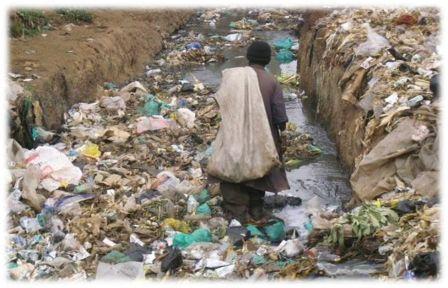 Kibera
is near the industrial area of Nairobi where up to 50% of the available
workforce are employed (usually in fairly unskilled jobs). However, there is
still an unemployment rate of 50%. This picture is a clear evidence of lack of
employment due to lack of training and this is why the training and teaching of
skills is very important.
Kibera
is near the industrial area of Nairobi where up to 50% of the available
workforce are employed (usually in fairly unskilled jobs). However, there is
still an unemployment rate of 50%. This picture is a clear evidence of lack of
employment due to lack of training and this is why the training and teaching of
skills is very important.
Medical facilities and HIV/AIDS Clinics
In Kibera there are no government clinics or hospitals. The providers are the charitable organizations: AMREF, MSF, churches plus some others. They do a great job. All people are encouraged to have a free HIV test and if positive to take free generic ARV medicine.
Economy
The inhabitants of Kibera live on less than a dollar a
day. Often they do not have enough money to pay the school fees or buy food and
medicine. Every evening money walks into Kibera, half a million wallets’ worth,
each tiny in itself. Some of that money circulates within Kibera (small
local business) but once a month a vast river of it siphons out of Kibera
through rent payments to structure owners (slumlords). Given that the settlements
are illegal, structure owners (slumlords) are not obliged to provide any services - no latrines or water, no
electricity, no rubbish collection, no infrastructure, totally inadequate
housing, no repairs or maintenance and open sewers filled with stinking,
raw sewage.
Transport & Electricity
A railway line passes in the middle of Kibera Slum thus passengers heading to Kisumu can view the slum. Kibera has a railway station, but due to lack of effective commuter train system in Nairobi, Kibera residents like any Nairobian use buses or matatus to reach city center or their destination of work, but most of the Kibera residents trek to work.
Electricity
Only about 20% of Kibera has electricity. UN-Habitat is in the process of providing it to some parts of Kibera – this will include street lighting, security lighting and connection to shacks (this costs Kshs 900 per shack, which in most cases is not affordable).
Drugs, Changaa and other illicit liquors
Cheap drugs and glue sniffing are an increasing problem in the
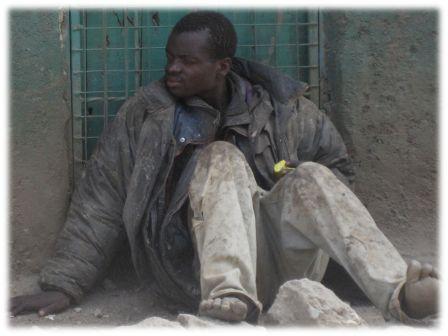
slums. Initially taken to alleviate boredom but then people find themselves hooked. Changaa is widely available, very strong (over 50% alcohol) and made incorrectly, so is usually very high in Methanol. The cost is only Ksh10 per glass and after a couple of glasses people become very drunk. With over 50% unemployment in Kibera many start drinking early in the morning leading to problems of violence, crime, rapes etc. A big challenge to the many organization working in Kibera .
Abortion and abandoned children
Due to
many men still not using condoms and the availability of 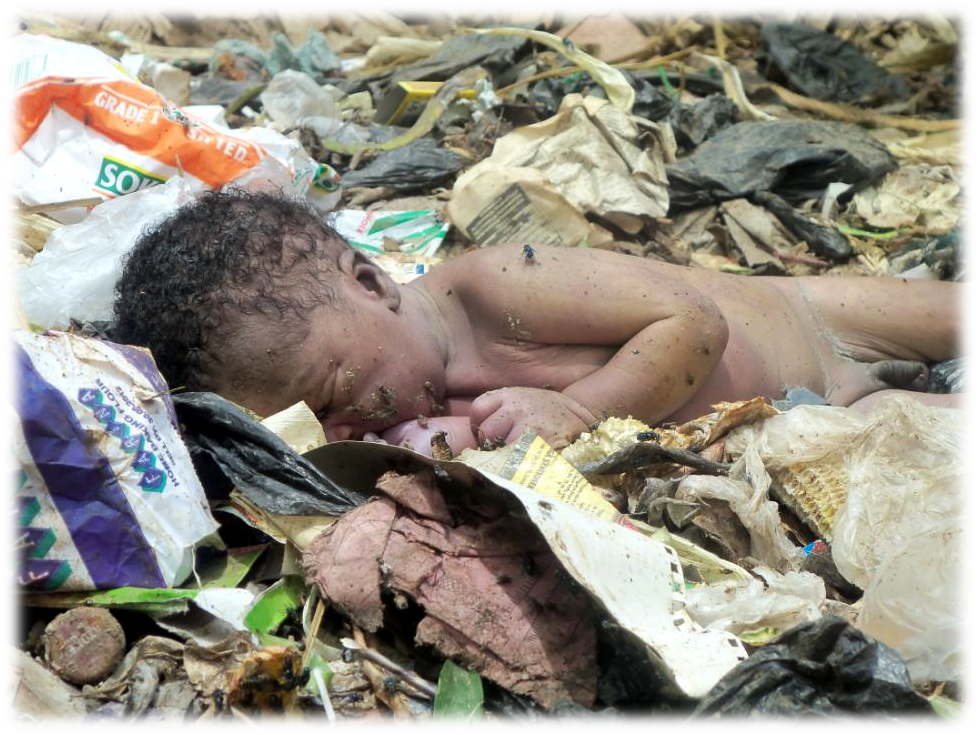 Changaa, many girls
become pregnant, at any one time about 50% of 16 to 25 yr old girls are
pregnant. Most of these pregnancies are unwanted, resulting in many cases of
abortion and abandoning of infants. This can be very dangerous, particularly in
such a poor area as Kibera. Many charities are working on this problem.
Unfortunately this baby boy was found dead by the Kibera riverside
dumping site. This has become a common case in Kibera with young ladies who
cannot afford abortion just giving birth and dumping their newly born babies by
the Kibera river.
Changaa, many girls
become pregnant, at any one time about 50% of 16 to 25 yr old girls are
pregnant. Most of these pregnancies are unwanted, resulting in many cases of
abortion and abandoning of infants. This can be very dangerous, particularly in
such a poor area as Kibera. Many charities are working on this problem.
Unfortunately this baby boy was found dead by the Kibera riverside
dumping site. This has become a common case in Kibera with young ladies who
cannot afford abortion just giving birth and dumping their newly born babies by
the Kibera river.